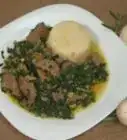This article was co-authored by wikiHow staff writer, Jessica Gibson. Jessica Gibson is a Writer and Editor who's been with wikiHow since 2014. After completing a year of art studies at the Emily Carr University in Vancouver, she graduated from Columbia College with a BA in History. Jessica also completed an MA in History from The University of Oregon in 2013.
This article has been viewed 27,019 times.
Learn more...
Get your hands on some cassava leaves and treat yourself to West African comfort food at its finest. Although you've probably seen more meals that use the cassava root, you can eat the leaves as long as you grind them and cook them thoroughly. Simmering the leaves makes a thick stew, which is sometimes called cassava or soup. Many African countries put their own take on stewing the leaves, so try your hand at a basic version and customize it by swapping out meat, adding dried fish, or using your favorite seasonings.
Ingredients
Basic Stewed Cassava Leaves
- 1 pound (450 g) of boneless meat
- 1 tablespoon (15 ml) of vegetable oil
- Ground pepper, to taste
- 2 onions, peeled and roughly chopped, divided
- 2 stock cubes like Maggi
- 3 cups (0.71 L) of water, divided
- 2 eggplants, peeled and roughly chopped
- 1⁄4 pound (110 g) of dried smoked fish or 3 tablespoons (42 g) of crayfish powder
- 1 Scotch bonnet or another chili to taste
- 5 tablespoons (75 g) of smooth peanut butter
- 1⁄2 cup (120 ml) of palm oil
- 1.1 pounds (0.50 kg) of pounded frozen cassava leaves, thawed
- 4 cloves of garlic, optional
Makes about 6 servings
Steps
Simmering the Meat
-
1Cut 1 pound (450 g) of boneless meat into bite-sized cubes. You can use any meat that's available. Try beef, chicken, turkey, or goat, for instance. Just make sure to cut them into evenly-sized pieces so they cook at the same rate.[1]
- Want to make vegetarian cassava leaves? No problem— just leave out the meat and skip the dried fish.
-
2Put the meat into a pot along with vegetable oil, onion, stock, and water. Set a big pot on the stove and put the meat cubes into it along with 1 tablespoon (15 ml) of vegetable oil and a pinch of salt and pepper. To really give the meat some flavor, add 1 of the stock cubes and 1 tablespoon (6 g) of chopped onion before you pour in 1⁄3 cup (79 ml) of the water.[2]
- Feel free to add up to 4 cloves of chopped garlic to the pot for a richer flavor.
Advertisement -
3Bring the water to a boil. Turn the burner to medium-high and keep the lid off of the pot so you can see when the water starts boiling— it won't take long![3]
-
4Simmer the meat for 25 minutes or until it's tender. Turn the burner down to medium and pop the lid on the pot. Simmer the meat until it's completely cooked and tender. Stir the meat occasionally to help it cook evenly.[4]
- Use a slotted spoon to scoop the meat into a dish and set it aside. You can leave the liquid in the pot to add to the vegetables later.
Making the Vegetable Base
-
1Put eggplants, onions, flaked fish, chili, and water into a blender. While you could pound all of these ingredients by hand, the blender really speeds things up! Put 2 roughly chopped eggplants into a blender along with 2 chopped onions, and 1 Scotch bonnet (or your favorite type of chili pepper). If you want to use smoked fish, get out 1⁄4 pound (110 g) of piece and flake it before you drop it into the blender. Then, pour in 2⁄3 cup (160 ml) of water.[5]
- Can't get ahold of dried fish? You can substitute 3 tablespoons (42 g) of crayfish powder to get that deep, seafood flavor.
-
2Pulse the ingredients until they're smooth. Pop the lid on the blender and pulse until all of the vegetables are blended and you can't see any chunks of dried fish. You might have to stop and scrape down the sides of the blender a few times. Keep blending until your flavorful mixture is totally smooth.[6]
- Some people like to add a few diced tomatoes to brighten the flavor of the dish. You can use fresh tomatoes or open a can add the diced tomatoes to the blender.
-
3Pour the purée into a pot with a stock cube, water, peanut butter, and palm oil. Put another big pot on the stove and spoon the flavorful purée into it. Then, drop in your remaining stock cube and pour in 1 1⁄2 cups (0.35 L) of water. Stir in 5 tablespoons (75 g) of smooth peanut butter and 1⁄2 cup (120 ml) of palm oil to finish the base for your cassava leaf stew.[7]
- If you don't have peanut butter in your pantry, grind up any ground nuts you have until they're fine and add them to the base. The peanut butter or ground nuts help thicken the stew so don't leave it out!
- Don't want to use palm oil? Try substituting the same amount of coconut oil. Instead of having a savory or earthy flavor, coconut oil has a mild, delicate flavor that also works well with cassava leaves.
-
4Bring the mixture to a boil and simmer it for 30 minutes. Turn the burner to high so the water starts to boil. Then, turn the burner down to medium so it bubbles gently. Keep the lid off of the pot so some of the water evaporates and your stew thickens.[8]
- Stir the pot occasionally so it doesn't scorch on the bottom of the pot.
Assembling the Stew
-
1Put thawed cassava leaves into a strainer and rinse them with cold water. Open a 1.1 lb (0.50 kg) package of pounded cassava leaves that you've thawed and put them into a fine-mesh strainer. Take it over to the sink and run cold water over it to rinse away any sand or grit.[9]
- Check the freezer aisles of your local African or ethnic market for ground cassava leaves. Still can't find them? It's fine to substitute the same amount of chopped spinach.
-
2Add the cassava leaves and liquid from the meat to the vegetables in the pot. Put your cassava leaves right into the simmering vegetable base you've got cooking on the stove and add the liquid that's in the pot with the meat. It will add a ton of flavor to your cassava leaves![10]
- Wait to add the cooked meat into the cassava stew since you don't want it to become tough.
-
3Simmer the stew for at least 30 minutes. Turn the burner to high and keep the lid off of the pot. Once it starts bubbling, turn the burner down to medium and let it bubble gently for at least 30 minutes. Keep the pot covered, but stir the stew occasionally until it's very thick like porridge.[11]
- Your cassava leaves might absorb a lot of water, so pour in more if they start to stick to the bottom of the pan.
-
4Add the cooked meat to the cassava leaf stew. When the cassava leaf stew is almost as thick as you like, put the meat you cooked earlier into the pot and stir it well. You can also taste the stew and adjust the seasonings.[12]
-
5Simmer the cassava for 10 more minutes. Let the stew bubble gently for 10 minutes over medium heat so the meat warms back up and the flavors meld. Then, serve the stew with steamed rice.[13]
- Refrigerate leftover cassava leaf stew in an airtight container for up to 4 days.
Community Q&A
-
QuestionWhich type of cassava leaves do I pluck?
 Community AnswerDark-green cassava leaves are the best.
Community AnswerDark-green cassava leaves are the best.
Warnings
- It's really important to grind, pound, or boil the cassava leaves. These break down the toxic cyanide in the leaves so they're safe to eat.[14]⧼thumbs_response⧽
Things You'll Need
- Knife and cutting board
- Measuring spoons
- Large pots with lids
- Spoon
- Blender
- Fine-mesh strainer
References
- ↑ https://recipesfromapantry.com/cassava-leaf-sauce-palava/
- ↑ https://recipesfromapantry.com/cassava-leaf-sauce-palava/
- ↑ https://www.internationalcuisine.com/cassava-leaf-stew/
- ↑ https://www.internationalcuisine.com/cassava-leaf-stew/
- ↑ https://recipesfromapantry.com/cassava-leaf-sauce-palava/
- ↑ https://www.internationalcuisine.com/cassava-leaf-stew/
- ↑ https://recipesfromapantry.com/cassava-leaf-sauce-palava/
- ↑ https://recipesfromapantry.com/cassava-leaf-sauce-palava/
- ↑ https://youtu.be/8uE1Pxs7AK0?t=85/
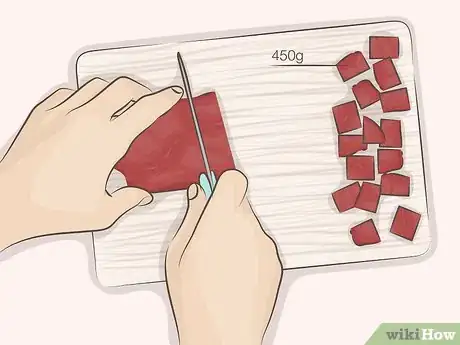



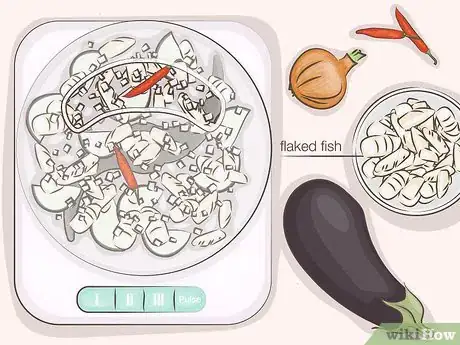

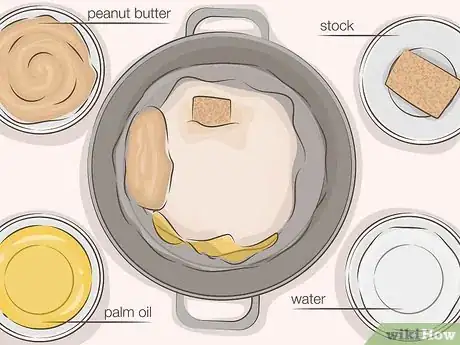



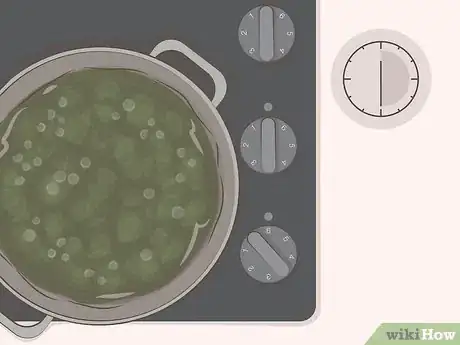
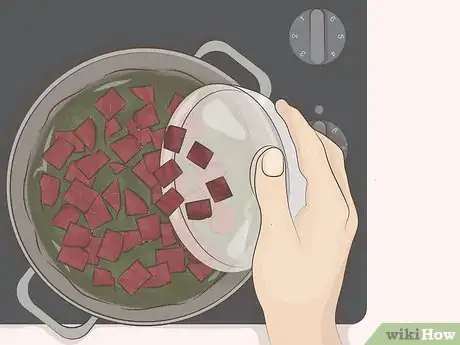


-Final.webp)
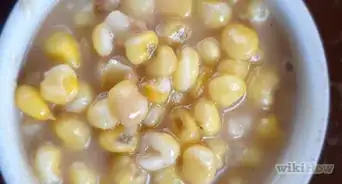

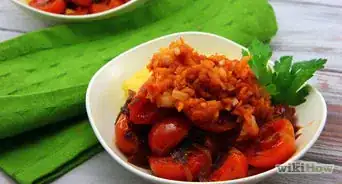













-Final.webp)
